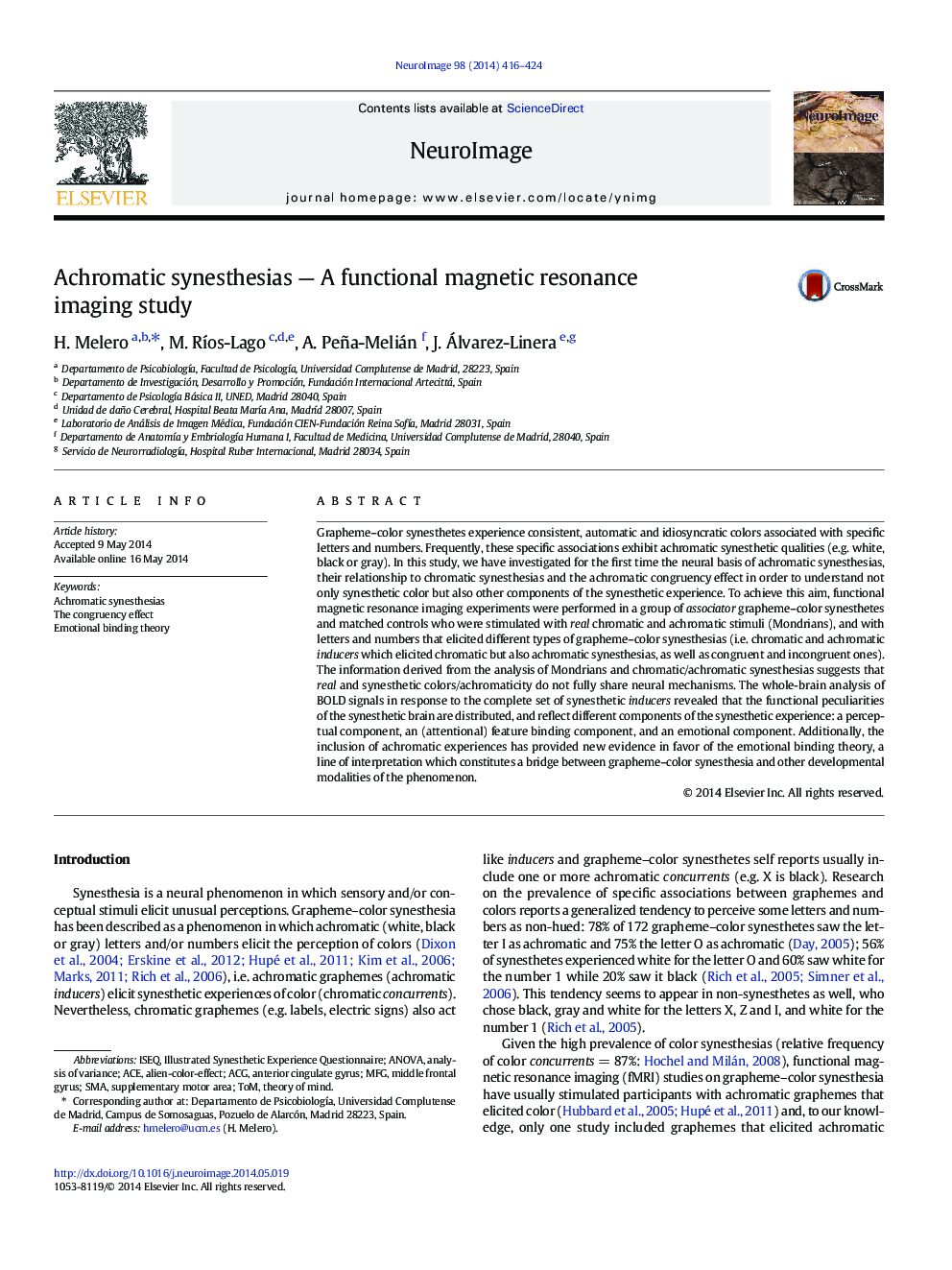| Article ID | Journal | Published Year | Pages | File Type |
|---|---|---|---|---|
| 6026993 | NeuroImage | 2014 | 9 Pages |
â¢Real and synesthetic colors/achromaticity do not fully share neural mechanisms.â¢The functional peculiarities of the synesthetic brain are distributed.â¢The inferior temporal, parietal and cingulate cortices contribute to synesthesia.â¢The congruency effect does not exhibit a functional neural basis.â¢Our findings constitute new evidence to support the emotional binding theory.
Grapheme-color synesthetes experience consistent, automatic and idiosyncratic colors associated with specific letters and numbers. Frequently, these specific associations exhibit achromatic synesthetic qualities (e.g. white, black or gray). In this study, we have investigated for the first time the neural basis of achromatic synesthesias, their relationship to chromatic synesthesias and the achromatic congruency effect in order to understand not only synesthetic color but also other components of the synesthetic experience. To achieve this aim, functional magnetic resonance imaging experiments were performed in a group of associator grapheme-color synesthetes and matched controls who were stimulated with real chromatic and achromatic stimuli (Mondrians), and with letters and numbers that elicited different types of grapheme-color synesthesias (i.e. chromatic and achromatic inducers which elicited chromatic but also achromatic synesthesias, as well as congruent and incongruent ones). The information derived from the analysis of Mondrians and chromatic/achromatic synesthesias suggests that real and synesthetic colors/achromaticity do not fully share neural mechanisms. The whole-brain analysis of BOLD signals in response to the complete set of synesthetic inducers revealed that the functional peculiarities of the synesthetic brain are distributed, and reflect different components of the synesthetic experience: a perceptual component, an (attentional) feature binding component, and an emotional component. Additionally, the inclusion of achromatic experiences has provided new evidence in favor of the emotional binding theory, a line of interpretation which constitutes a bridge between grapheme-color synesthesia and other developmental modalities of the phenomenon.
